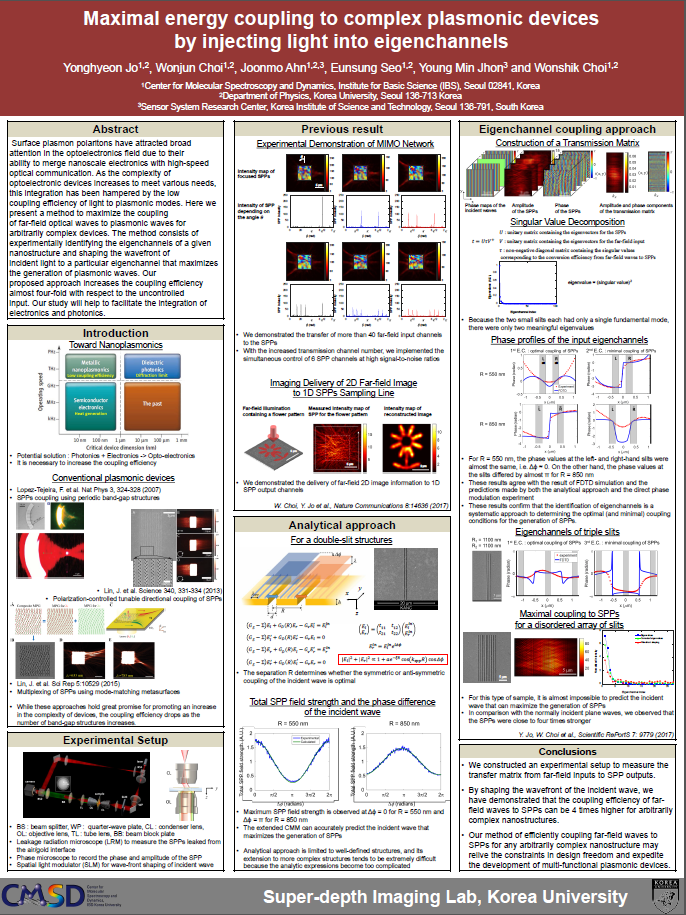mainmenu
Maximal energy coupling to complex plasmonic devices by injecting light into eigenchannels
2018 SPIE

Abstract― We present a systematic method to maximize the coupling of far-field waves to SPPs for arbitrary complex metallic nanostructures that do not have any band-gap structures. In the proposed method, we measure the transfer matrix of a given complex plasmonic device that connects far-field input to the SPP output. By performing the singular value decomposition of this unique transfer matrix, we identify the eigenchannels of the device of interest. By coupling far-field waves to these eigenchannels, we demonstrated that the coupling efficiency can be enhanced by almost four times when compared to uncontrolled inputs.
Plasmonic integrated circuits have been considered ideal candidates to mediate nanoscale electronics with high-speed photonics and to improve the overall computation power. In recent years, a large volume of research has been conducted to fabricate the building blocks of integrated circuits, such as nanolight source, waveguides, switches, couplers, modulators, and logic gates. In many of these cases, plasmonic devices use band-gap structures to guarantee the optimal coupling of far-field waves to surface plasmon polaritons (SPPs). However, the working conditions for these band-gap structures are so strict that the wavelength and polarization of illumination need to be fixed to ensure the best performance. These stringent conditions limit the design freedom of integrated circuits, and the growing needs of complex devices that can host multiple functionalities remain unmet as a consequence.
Here, we present a systematic method to maximize the coupling of far-field waves to SPPs for arbitrary complex metallic nanostructures that do not have any band-gap structures. In the proposed method, we measure the transfer matrix of a given complex plasmonic device that connects far-field input to the SPP output. By performing the singular value decomposition of this unique transfer matrix, we identify the eigenchannels of the device of interest. By coupling far-field waves to these eigenchannels, we demonstrated that the coupling efficiency can be enhanced by almost four times when compared to uncontrolled inputs. A theoretical analysis based on coupled mode method supported the validity of the proposed method. We expect that our method of efficiently coupling far-field waves to SPPs for any arbitrary complex nanostructure may relive constraints in the design freedom and expedite the development of multi-functional plasmonic devices.


